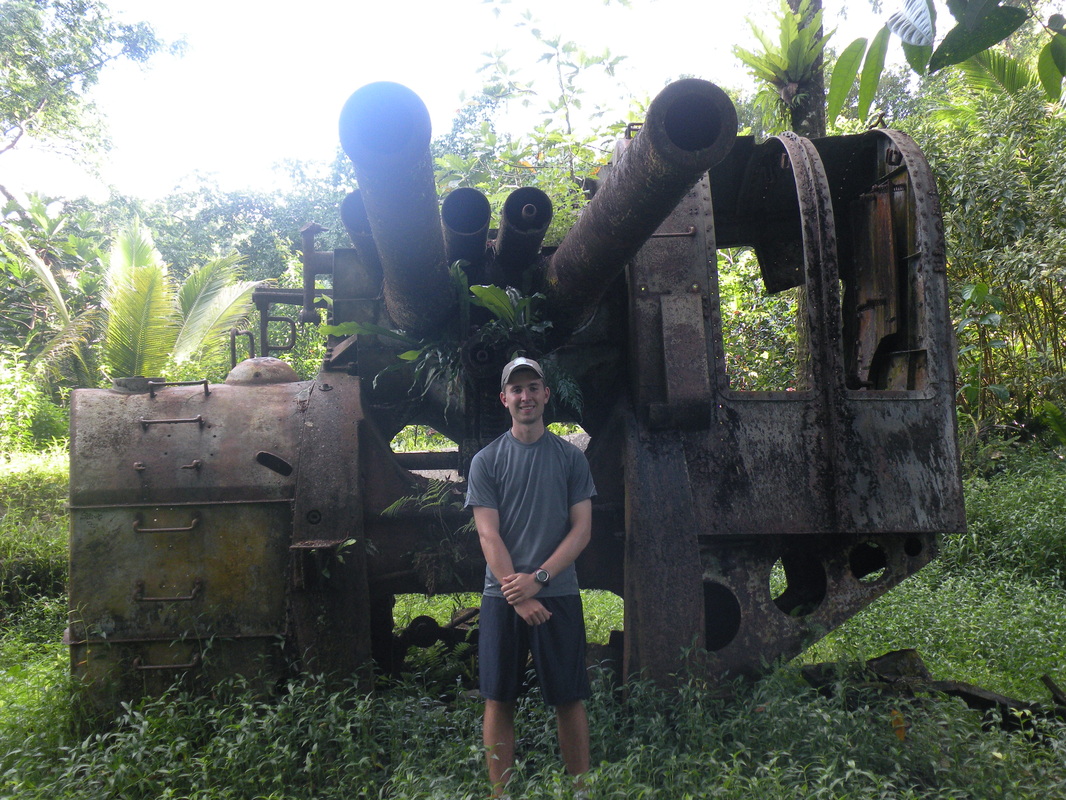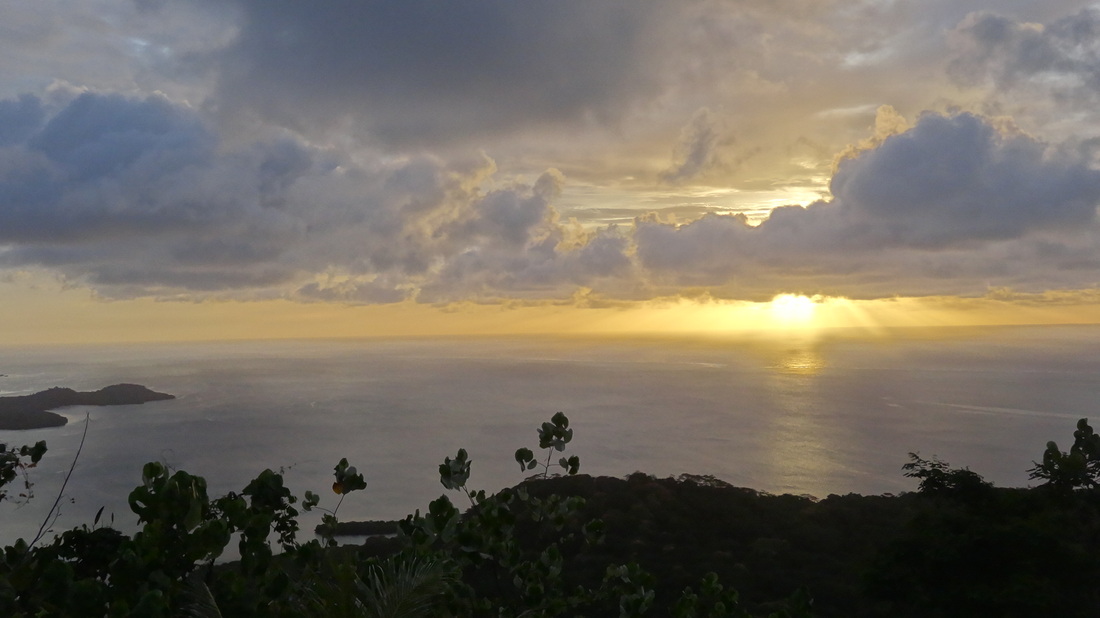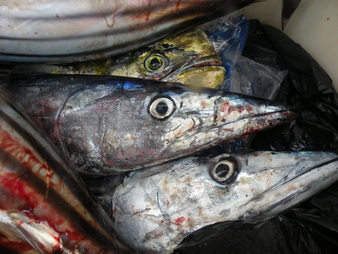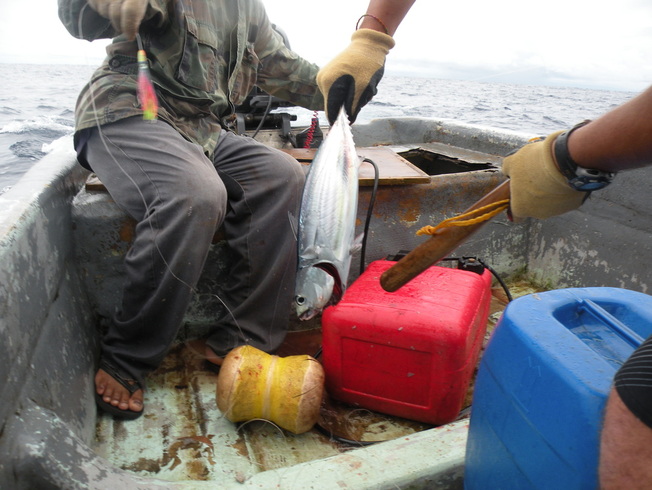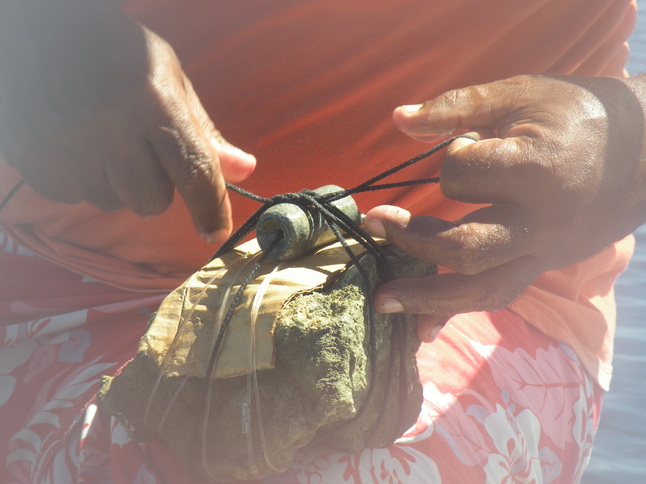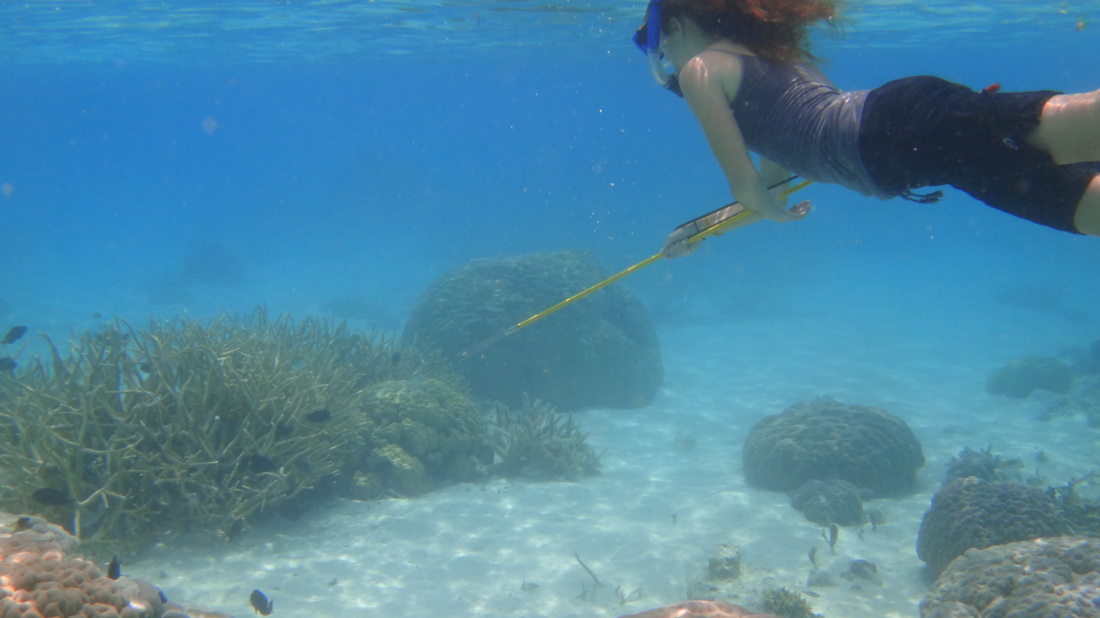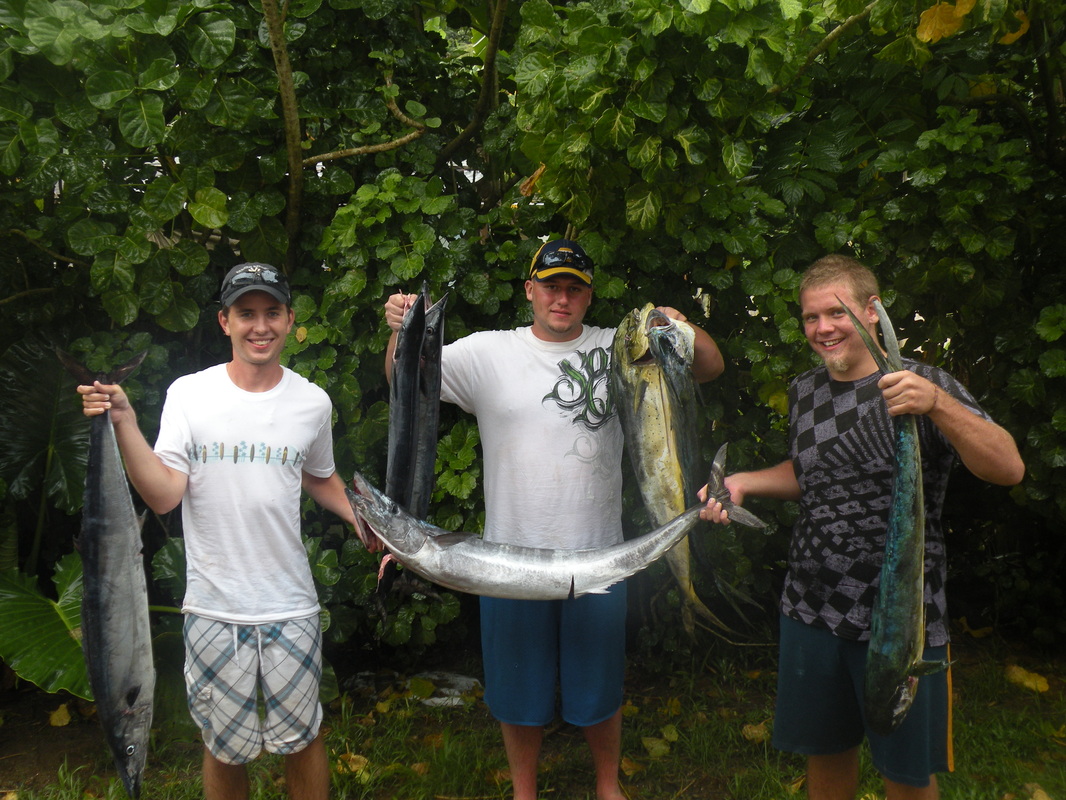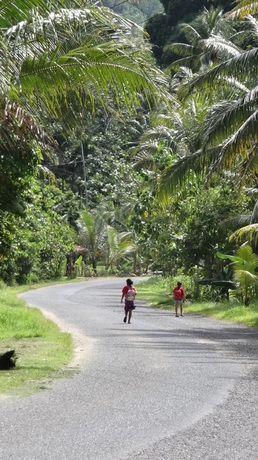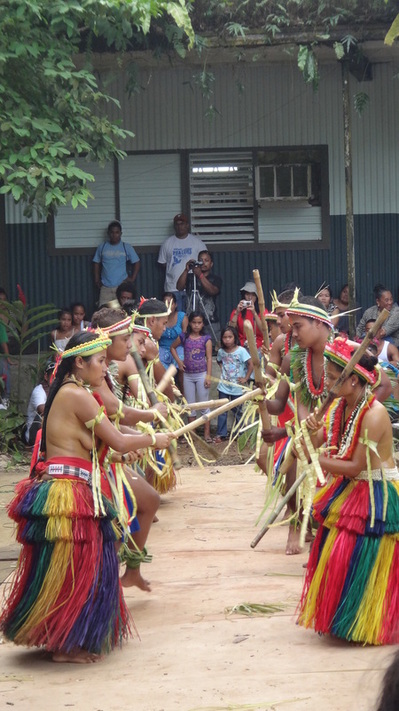
Stephen and I in a Japanese pillbox, deep in the jungle on Sokehs Ridge
For history buffs like myself, Pohnpei presents many hidden wonders from the past. The first of these that comes to mind is Nan Madol, without a doubt Pohnpei’s most famous landmark. Growing up watching the History Channel and reading books, one of my favorite time periods has always been World War II. Before I came I did a little research to see exactly what Pohnpei’s involvement was in the Pacific theater. I was slightly disappointed when I learned that there were no shots fired on Pohnpei. However, the Japanese did occupy the island and it was bombed significantly before the Japanese abandoned it. The FSM though did play a significant role in the war. Chuuk, the state closest to the West of Pohnpei, held a very important harbor for the Japanese. The devastation was so great when the Allied Forces attacked in February 1944 as part of Operation Hailstone, it was called the Japanese Pearl Harbor. Chuuk is known for its great scuba diving of Japanese wrecks. Back on Pohnpei, there have been no battlefields to explore, but there are some very cool remnants of the Japanese occupation.
Some of these remnants are more easily found than others. In downtown Kolonia, the budding metropolis that it is, there is an old Japanese tank right by the post office. I have gotten so used to seeing the old, moss covered weapon of terror that I had to take a picture of it offline rather than take one myself.
Some of these remnants are more easily found than others. In downtown Kolonia, the budding metropolis that it is, there is an old Japanese tank right by the post office. I have gotten so used to seeing the old, moss covered weapon of terror that I had to take a picture of it offline rather than take one myself.
I was talking with my supervisor John a few months ago about World War II on Pohnpei and he mentioned I should go into the offices at the local hardware store to see their old Japanese artifacts. There, a few feet away from hammers and measuring tape was a display of Japanese swords, helmets, guns, and artillery. It was really cool to see so many cool relics and strange to see them in such an obscure place.
What’s more fun though is going on treks to find other remnants of the Japanese occupation, deep in the jungle. One of my first weekends here, I was able to see a few old Japanese anti-aircraft guns on top of Sokehs Ridge, along with a fully restored Japanese tank. This past weekend, my new roommate Stephen (who is working in the Emergency Medical Service program) and I went up to see the guns. John though told us about a pill box that was off the beaten path. We hiked around the jungle for a little bit, eventually finding trenches that we thought would lead us to the pillbox. We later learned that these trenches are caved-in tunnels. Eventually, we stumbled upon this entry way into what appeared to be a man-made cave. While it’s not the scariest thing walking into a cave with a dimly lit headlamp, having no idea what’s inside, I do admit it was a little bit sketchy. The video below shows us going into the cave and my boyhood joy of finding the pillbox!
While the American military never occupied Pohnpei during WWII, it still left some major reminders of the past conflict. Many times throughout our hikes in the jungle, particularly when hiking closer to the shore such as on Sokehs Ridge, it is easy to stumble upon old bomb craters. These craters range in size from five feet across to twenty-five feet across and are certainly a sight to be seen.
The Japanese left more behind than tanks and guns. Their time on the island left an indelible mark on the culture that can still be seen today. The first thing that comes to mind is how locals often bow their head down as a sign of respect. After being on island for so long I find myself doing this as well. In regards to diet, don’t quote me on this but I suspect that it was the Japanese who brought rice to Pohnpei, which is now a staple for almost every meal.
While the Japanese left a lasting influence on Pohnpei, there is no doubt this influence is fading. I often hear Mr. B talk about how many of the people who were around during the Japanese time wish they were under Japanese rule again. The Japanese were known for their harsh treatment of local people on islands they conquered and disciplining those they viewed as “below them” with a swift and heavy hand. While perhaps the Pohnpeians didn’t have as much freedom as they do now, they certainly were run more efficiently. Case in point:
Occasionally when my students get rowdy I remind them they should be glad they are no longer under Japanese rule. When they occupied Pohnpei, locals only went to grammar school for approximately two-three years. The cream of the crop went to a trade school while the rest were left on their own. Despite only being in school for a few years every student became proficient in Japanese. Fast forward 70 some years and students are in school for twelve+ years and hardly ever become proficient in English. How can this be? The answer likely won’t surprise you – the Japanese were extremely strict, and failure to behave or learn meant punishment, often physical punishment. So when my students are going crazy I remind them to be thankful, and say their motivation to succeed has to come from within!
I have only mentioned a small amount of WWII history on Pohnpei, but I hope this gives you a brief glimpse! Besides searching for old WWII relics, the past two weekends have involved trips to my favorite waterfall, Lehn Paipohn (see video below of recent jump!) and two new waterfalls today, Sawartik & Sawarlap, which means “Little Brother & Big Brother” in Pohnpeian. Sawarlap is one of the tallest waterfalls on Pohnpei, see pictures and video below!
The Japanese left more behind than tanks and guns. Their time on the island left an indelible mark on the culture that can still be seen today. The first thing that comes to mind is how locals often bow their head down as a sign of respect. After being on island for so long I find myself doing this as well. In regards to diet, don’t quote me on this but I suspect that it was the Japanese who brought rice to Pohnpei, which is now a staple for almost every meal.
While the Japanese left a lasting influence on Pohnpei, there is no doubt this influence is fading. I often hear Mr. B talk about how many of the people who were around during the Japanese time wish they were under Japanese rule again. The Japanese were known for their harsh treatment of local people on islands they conquered and disciplining those they viewed as “below them” with a swift and heavy hand. While perhaps the Pohnpeians didn’t have as much freedom as they do now, they certainly were run more efficiently. Case in point:
Occasionally when my students get rowdy I remind them they should be glad they are no longer under Japanese rule. When they occupied Pohnpei, locals only went to grammar school for approximately two-three years. The cream of the crop went to a trade school while the rest were left on their own. Despite only being in school for a few years every student became proficient in Japanese. Fast forward 70 some years and students are in school for twelve+ years and hardly ever become proficient in English. How can this be? The answer likely won’t surprise you – the Japanese were extremely strict, and failure to behave or learn meant punishment, often physical punishment. So when my students are going crazy I remind them to be thankful, and say their motivation to succeed has to come from within!
I have only mentioned a small amount of WWII history on Pohnpei, but I hope this gives you a brief glimpse! Besides searching for old WWII relics, the past two weekends have involved trips to my favorite waterfall, Lehn Paipohn (see video below of recent jump!) and two new waterfalls today, Sawartik & Sawarlap, which means “Little Brother & Big Brother” in Pohnpeian. Sawarlap is one of the tallest waterfalls on Pohnpei, see pictures and video below!


